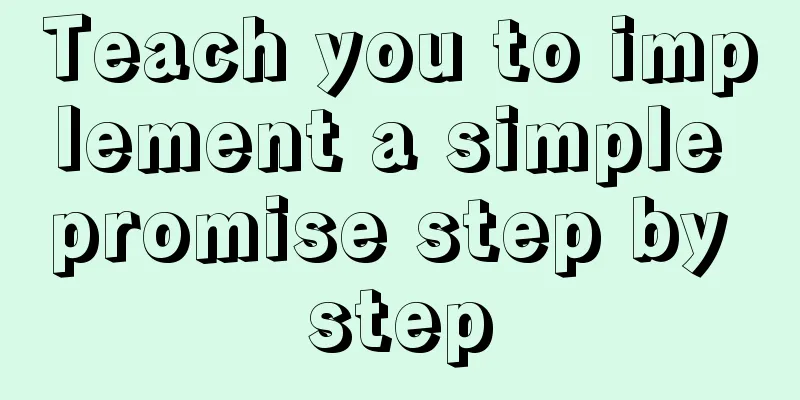JavaScript setTimeout and setTimeinterval use cases explained

|
Both methods can be used to execute a piece of javascript code after a fixed period of time, but each has its own application scenarios. In fact, the syntax of setTimeout and setInterval is the same. They all have two parameters, one is the code string to be executed, and the other is the time interval in milliseconds, after which the code will be executed. However, there is a difference between these two functions. After setInterval executes the code once, it will automatically repeat the code after a fixed time interval, while setTimeout only executes the code once. Although it seems that setTimeout can only be applied to on-off actions, you can create a function loop to repeatedly call setTimeout to achieve repeated operations:
showTime();
function showTime()
{
var today = new Date();
alert("The time is: " + today.toString());
setTimeout("showTime()", 5000);
}Once this function is used, the time will be displayed every 5 seconds. If you use setInterval, the corresponding code is as follows:
setInterval("showTime()", 5000);
function showTime()
{
var today = new Date();
alert("The time is: " + today.toString());
}These two methods may look very similar and display similar results, but the biggest difference between the two is that the setTimeout method does not execute the showTime function every 5 seconds. It executes the showTime function 5 seconds after each call to setTimeout. This means that if the main part of the showTime function takes 2 seconds to execute, then the entire function will be executed every 7 seconds. However, setInterval is not bound by the function it calls, it simply repeats the function at a certain interval. If you need to perform an action accurately after a fixed time interval, it is best to use setInterval. If you do not want to interfere with each other due to continuous calls, especially if each function call requires heavy calculations and a long processing time, it is best to use setTimeout. Use of function pointersThe first parameter of the two timing functions is a string of code. In fact, this parameter can also be a function pointer, but IE 5 under Mac does not support this. If you use a function pointer as the second parameter of the setTimeout and setInterval functions, they can execute a function defined elsewhere:
setTimeout(showTime, 500);
function showTime()
{
var today = new Date();
alert("The time is: " + today.toString());
}In addition, anonymous functions can also be declared as inline functions:
setTimeout(function(){var today = new Date();
alert("The time is: " + today.toString());}, 500);discussIf the timing function is not processed, setInterval will continue to execute the same code until the browser window is closed or the user goes to another page. However, there are still ways to terminate the execution of setTimeout and setInterval functions. When the setInterval call is completed, it will return a timer ID, which can be used to access the timer in the future. If the ID is passed to clearInterval, the execution of the called process code can be terminated. The specific implementation is as follows:
var intervalProcess = setInterval("alert('GOAL!')", 3000);
var stopGoalLink = document.getElementById("stopGoalLink");
attachEventListener(stopGoalLink, "click", stopGoal, false);
function stopGoal()
{
clearInterval(intervalProcess);
}As long as stopGoalLink is clicked, no matter when it is clicked, intervalProcess will be canceled and intervalProcess will not be executed repeatedly in the future. If setTimeout is canceled within the timeout period, this termination effect can also be achieved on setTimeout, as follows:
var timeoutProcess = setTimeout("alert('GOAL!')", 3000);
var stopGoalLink = document.getElementById("stopGoalLink");
attachEventListener(stopGoalLink, "click", stopGoal, false);
function stopGoal() {
clearTimeout(timeoutProcess);
}This concludes this article on the detailed use cases of JavaScript setTimeout and setTimeinterval. For more relevant content on the use of js setTimeout and setTimeinterval, please search for previous articles on 123WORDPRESS.COM or continue to browse the related articles below. I hope everyone will support 123WORDPRESS.COM in the future! You may also be interested in:
|
<<: MySQL transaction, isolation level and lock usage example analysis
>>: Ubuntu 19.10 enables ssh service (detailed process)
Recommend
Parent-child component communication in Vue and using sync to synchronize parent-child component data
Table of contents Preface Child components pass d...
Vue ElementUI Form form validation
Form validation is one of the most commonly used ...
How to write transparent CSS for images using filters
How to write transparent CSS for images using filt...
Implementation of CSS loading effect Pac-Man
emmm the name is just a random guess 2333 Preface...
The architecture and practice of synchronizing Meituan DB data to the data warehouse
background In data warehouse modeling, the origin...
MySQL 8.0.20 installation and configuration method graphic tutorial under Windows 10
Win10 system locally installed MySQL8.0.20, perso...
jQuery plugin to achieve seamless carousel
Seamless carousel is a very common effect, and it...
5 basic skills of topic page design (Alibaba UED Shanmu)
This topic is an internal sharing in the second h...
HTML table markup tutorial (30): cell dark border color attribute BORDERCOLORDARK
In cells, dark border colors can be defined indiv...
Tutorial on installing Docker in Windows 10 subsystem Ubuntu (WSL) (with pictures and text)
Table of contents Environmental Description Insta...
Vue+webrtc (Tencent Cloud) practice of implementing live broadcast function
Table of contents 1. Live broadcast effect 2. Ste...
JavaScript to achieve calendar effect
This article shares the specific code for JavaScr...
Demystifying the HTML 5 Working Draft
The World Wide Web Consortium (W3C) has released a...
A brief analysis of the relationship between various Tomcat logs and the segmentation of catalina.out files
The relationship between Tomcat logs A picture is...
Detailed explanation of linux crm deployment code
Linux basic configuration Compile and install pyt...









